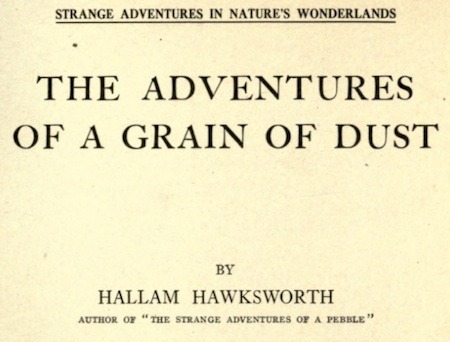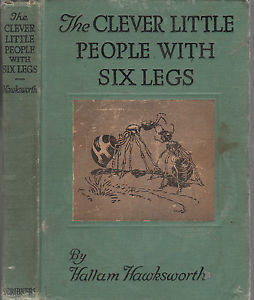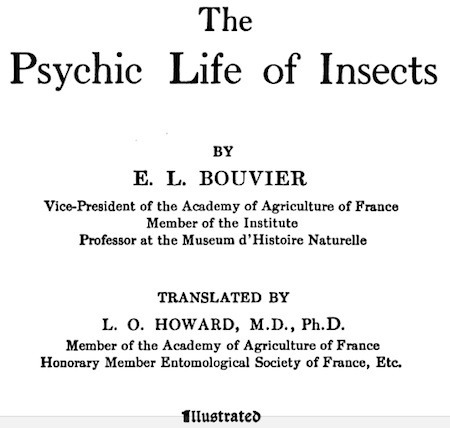Marc Abrahams's Blog, page 398
June 5, 2014
Crisps packaging color associations in 3 countries
 Ig Nobel Prize winner (he was honored in 2008 for electronically modifying the sound of a potato chip to make the person chewing the chip believe it to be crisper and fresher than it really is) Charles Spence and colleagues report a new, very specific advance in understanding consumers’ understanding and preference for certain aspects of packaging for crisps (known in some countries as ‘chips’). Their new study is:
Ig Nobel Prize winner (he was honored in 2008 for electronically modifying the sound of a potato chip to make the person chewing the chip believe it to be crisper and fresher than it really is) Charles Spence and colleagues report a new, very specific advance in understanding consumers’ understanding and preference for certain aspects of packaging for crisps (known in some countries as ‘chips’). Their new study is:
“The context of colour-flavour associations in crisps packaging: A cross-cultural study comparing Chinese, Colombian, and British consumers,” Carlos Velasco, Xiaoang Wan, Alejandro Salgado-Montejo, Andy Woods, Gonzalo Andrés Oñate, Bingbing Mu, Charles Spence, Food Quality and Preference, epub June 3, 2014. (Thanks to investigator Neil Martin for bringing this to our attention.) The authors write:
‘Here, we report on the results of an online study designed to assess any cross-cultural differences in colour-flavour associations in the packaging of crisps. By comparing Colombian, Chinese, and British participants, we were able to demonstrate that certain correspondences are consistent across culture, whereas others vary. Closer inspection of the data revealed that those associations corresponding to natural parings in the environment such as “tomato” with red and “cucumber” with green can be found across countries, whereas other more complex flavours such as “salt and vinegar” or unspecified flavours such as “natural” or “original”, tend to have different colour associations depending on the country. These latter associations may only be consistent in those countries in which they exist and have been learned, or internalized, by the consumer (in Colombia, for instance, the “natural” flavour is signified by blue packaging).’
Here’s further detail from the study:

Today is Dead Duck Day
Join the big celebration in Rotterdam, if you are in Rotterdam.
Or invite neighbors to join you in celebration, wherever you are.

OM, OM on the brain
Two Indian scientists wielded sophisticated mathematics to dissect and analyse the traditional meditation chanting sound “OM”. The OM team published a series of monographs in academic journals. These plumb certain acoustic subtleties of Om, which these researchers say is “the divine sound”. For a little about that, see our small report, in 2010, on the repetitive physics of OM.
Now, now, now, now, now, now, now, now, now, now, now, now, now, now, now, now, now, now a different team of Indian scientists has taken images of brain activity of persons while those persons chant “OM” and while they chant something other than “OM”. The new study is:
“Neuro-cognitive aspects of ‘OM’ sound/syllable perception: A functional neuroimaging study,” Uttam Kumar, Anupam Guleria and Chunni Lal Khetrapal [pictured here], Cognition and Emotion, epub May 21, 2014. (Thanks to investigator Neil Martin for bringing this to our attention.) The authors, at the Sanjay Gandhi Postgraduate Institute of Medical Sciences Campus, Lucknow, India, explain:
The sound “OM” is believed to bring mental peace and calm. The cortical activation associated with listening to sound “OM” in contrast to similar non-meaningful sound (TOM) and listening to a meaningful Hindi word (AAM) has been investigated using functional magnetic resonance imaging (MRI). The behaviour interleaved gradient technique was employed in order to avoid interference of scanner noise. The results reveal that listening to “OM” sound in contrast to the meaningful Hindi word condition activates areas of bilateral cerebellum, left middle frontal gyrus (dorsolateral middle frontal/BA 9), right precuneus (BA 5) and right supramarginal gyrus (SMG). Listening to “OM” sound in contrast to “non-meaningful” sound condition leads to cortical activation in bilateral middle frontal (BA9), right middle temporal (BA37), right angular gyrus (BA 40), right SMG and right superior middle frontal gyrus (BA 8). The conjunction analysis reveals that the common neural regions activated in listening to “OM” sound during both conditions are middle frontal (left dorsolateral middle frontal cortex) and right SMG.
Here’s further detail from the study:
Here’s video of persons chanting “OM”:
BONUS (unrelated): A performance of the song “Home on the Range”:

June 4, 2014
Is this what happens when you see the gorilla?
Unintentionally harking back to the Ig Nobel Prize-winning “Did You See the Gorilla” experiment, a Seattle PI news report says:
Costumed Zoo Employee Taken Down by Veterinarian with a Tranquilizer Dart – the Vet Mistook Him for a Real Gorilla
Loro Parque, an amusement park located on a Spanish island off the coast of Africa where SeaWorld warehouses their surplus orcas seems like it must be a dangerous place to work. Previously, one of their trainers was killed by one of SeaWorld’s orcas there, and now it seems that their vet can’t distinguish between a wild gorilla and one of their own employees dressed up in a gorilla suit.
During a practice drill, the employee donned the costume and ran around the grounds to add realism to the event, but apparently the vet didn’t know it was a drill and opened fire with his tranquilizer gun on the hapless employee – who apparently had an allergic reaction to the dose, designed to stop a 400 pound gorilla in its tracks.…
That Seattle PI report is based heavily on a report (in Spanish) by La Opinion de Tenerife, which begins:
Dispara un dardo narcotizante a un cuidador al confundirlo con un gorila
Un operario de Loro Parque, de 35 años, recibió el disparo de un dardo narcotizante al ser confundido con un gorila. A causa del disparo, realizado por el veterinario, tuvo que ser trasladado hasta el Hospital Universitario de Canarias en estado grave, según apuntaron fuentes policiales y del 112 a este medio.…
Christopher Chabris and Daniel Simons were awarded the 2004 Ig Nobel Prize in psychology for demonstrating that when people pay close attention to something, it’s all too easy to overlook anything else — even a woman in a gorilla suit.
Their experiment — one of the most startling demonstrations about human nature — can be seen in the video below. The Invisible Gorilla is a book by Chabris and Simons. They also write an Invisible Gorilla blog.
(Thanks to Miss Conduct for bringing this to our attention.)

For Enthusiasts of Sticks of Butter
Two items, one old, one new, for enthusiasts of sticks of butter. First, a patent:
“Combined storing and slicing device for a stick of butter or margarine or the like,” US patent #4513501, granted to Jong S. Lee, April 30, 1983. The patent document explains: “The present invention relates to a combined storing and slicing device for a stick of butter or margarine or the like…. More specifically, the device according to the present invention may be manipulated with one hand, does not necessitate the handling of the butter and is capable of slicing the butter while held in the user’s hand.”
Now, an unrelated, but butter-stick-centric, video. A while ago, Julian Petschek was a precocious young child who operated the shoulder-mounted videocam in several of the Ig Nobel Prize ceremony live webcasts. Julian has just graduated from CalArts. This animation, whose protagonist is a stick of butter (the banana shown here is of secondary importance), was Julian’s final student project:
BONUS: US patent #5035056, the famous banana slicer patent:

A pebble, dust, and the more-than-half-forgotten author Hallam Hawksworth
For adventure in a book, no author can or should quite equal what Hallam Hawksworth produced during the 1921-1922:
The Strange Adventures of a Pebble, Hallam Hawksworth, 1921.
The Adventures of a Grain of Dust, Hallam Hawksworth, 1922.
But some may disagree as to when was Hawksworth’s best period. Arguments can be made for the year 1926, for that was the date of publication of a book in which Hawksworth’s major characters were neither pebbles nor dust. Opting for more complex beings, Hawksworth produced
The Clever Little People With Six Legs, Hallam Hawksworth, 1926.
BONUS (unrelated, perhaps to anything, anywhere, ever): A short video titled “Adventures of a Speck of Dust“:

June 3, 2014
The Psychic Life of Insects
How long has it been since you read E.L. Bouvier’s The Psychic Life of Insects [Century Company, 1922]?

Celebrate the 19th Dead Duck Day, on June 5th 2014
 Thursday June 5th, 2014 is Dead Duck Day, arriving exactly one year after last year’s Dead Duck Day. At exactly 17:55 h we will honor the mallard duck that became known to science as the first (documented) ‘victim’ of homosexual necrophilia in that species, and earned its discoverer, Kees Moeliker, the 2003 Ig Nobel Biology Prize.
Thursday June 5th, 2014 is Dead Duck Day, arriving exactly one year after last year’s Dead Duck Day. At exactly 17:55 h we will honor the mallard duck that became known to science as the first (documented) ‘victim’ of homosexual necrophilia in that species, and earned its discoverer, Kees Moeliker, the 2003 Ig Nobel Biology Prize.
Please join the short open-air ceremony next to the new wing of the Natural History Museum Rotterdam (the Netherlands), right below the new Dead Duck Memorial Plaque, where that duck (now museum specimen NMR 9989-00232) met his dramatic end.
This is what will happen
Commemorate the life and death of NMR 9989-00232, the mallard-duck, which is now has a special exhibit in the museum.
Review (maybe even sing part of) ‘The Homosexual Necrophiliac Duck Opera’, composed and conducted by Daniel Gillingwater and originally performed by soprano Sarah Redmond and the Egde Ensemble (the world-premiere of this mini-opera was 14 March 2014 at Imperial College, London, as part of the Ig Nobel Tour of the UK).
Honour the new book by Menno Schilthuizen ‘Nature’s Nether Regions’. This book devoted almost two pages to ‘The duck’ and Dead Duck Day.
Read the special Dead Duck Day Message, this year written by Linda Lombardi, author of the book Animals Behaving Badly .
Hear about the use of glass in modern architecture, and discuss ways to prevent birds from colliding with glass (buildings).
Enjoy the traditional six-course (dead) duck dinner at the famous Tai Wu Restaurant.More and practical information: click here (and here is the location [pictured below])

Feeling nostalgic? Dip into a brief history of Dead Duck Day.

June 2, 2014
Count the tempestuous assumptions
Blustery academia sometimes coughs up a perfectly delight-filled storm of assumptions. With that quasi-thought in mind, can you count the assumptions in this new study? The study is:
“Female hurricanes are deadlier than male hurricanes,” Kiju Jung, Sharon Shavitt, Madhu Viswanathan, and Joseph M. Hilbe, Proceedings of the National Academy of Sciences, epub June 2, 2014.
Here’s one, not atypical, chunk of the study:
“Experiment 6. Participants. A total of 201 students at the University of Illinois at Urbana–Champaign participated for course credit (age, 18–24 y; 113 females).
“Stimuli and procedure. Participants were randomly assigned to one of two conditions: Hurricane Alexander vs. Hurricane Alexandra. The procedure was identical to experiment 5 ["Participants reported intentions to follow a voluntary evacuation order..."] with the following exception. After reporting evacuation intentions, participants completed two unrelated tasks for about 20 min and then reported their gender-trait beliefs.”
If you’d like a head start in counting those assumptions, read this essay by Ed Yong.
Keep this study in mind the next time you hear someone explain the intrinsic worth, power, and majesty of the peer review process.
(Thank you to the sudden deluge of persons who alerted us to the existence of this study.)

Schizophrenia – caused by demons?
 “The causes of schizophrenia have been the subject of much debate”, and the debate is now extended with a new possibility proposed by Dr. Kemal Irmak, of the High Council of Science, Gulhane Military Medical Academy, Ankara, Turkey.
“The causes of schizophrenia have been the subject of much debate”, and the debate is now extended with a new possibility proposed by Dr. Kemal Irmak, of the High Council of Science, Gulhane Military Medical Academy, Ankara, Turkey.
In the June 2014 issue (Volume 53, Issue 3, pp 773-777) of the Journal of Religion and Health(which is an “international interdisciplinary journal which publishes original peer-reviewed articles that deal with mental and physical health in relation to religion and spirituality of all kinds.”) Dr. Irmak and colleagues ask : Schizophrenia or Possession?
“Hallucinations are a cardinal positive symptom of schizophrenia which deserves careful study in the hope it will give information about the pathophysiology of the disorder. We thought that many so-called hallucinations in schizophrenia are really illusions related to a real environmental stimulus. One approach to this hallucination problem is to consider the possibility of a demonic world. Demons are unseen creatures that are believed to exist in all major religions and have the power to possess humans and control their body. Demonic possession can manifest with a range of bizarre behaviors which could be interpreted as a number of different psychotic disorders with delusions and hallucinations. The hallucination in schizophrenia may therefore be an illusion—a false interpretation of a real sensory image formed by demons.”
The new theory raises an enigmatic question : if medication helps patients, is it acting on the patients themselves, or on the demons which possess them?
Other avenues of research : see: ‘Do shoes cause schizophrenia?’
[Illustration from 'The Demon McGuire', 1885, courtesy the British Library]

Marc Abrahams's Blog
- Marc Abrahams's profile
- 14 followers











